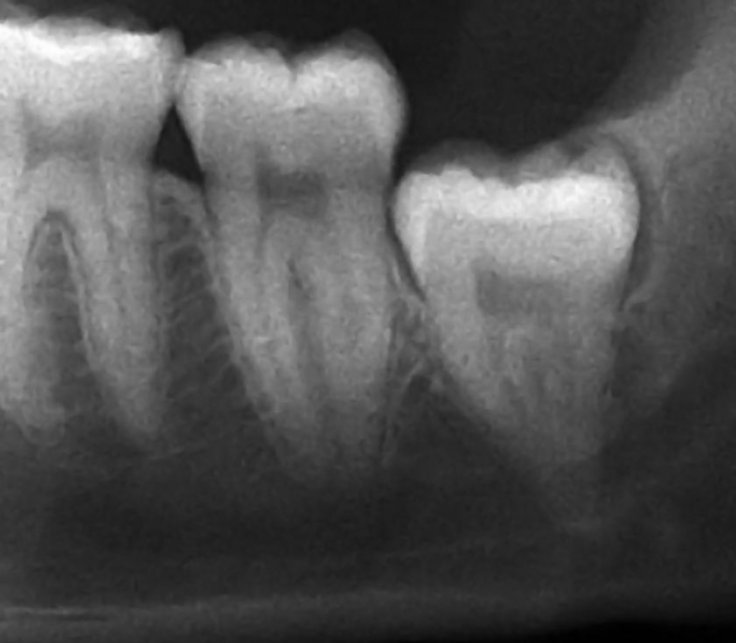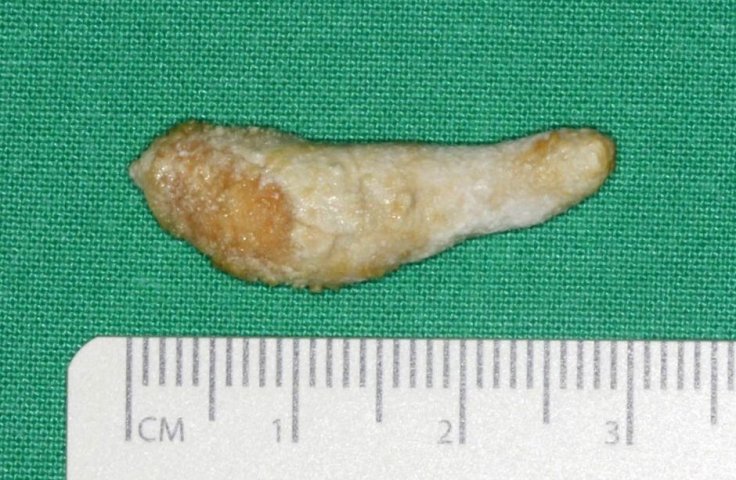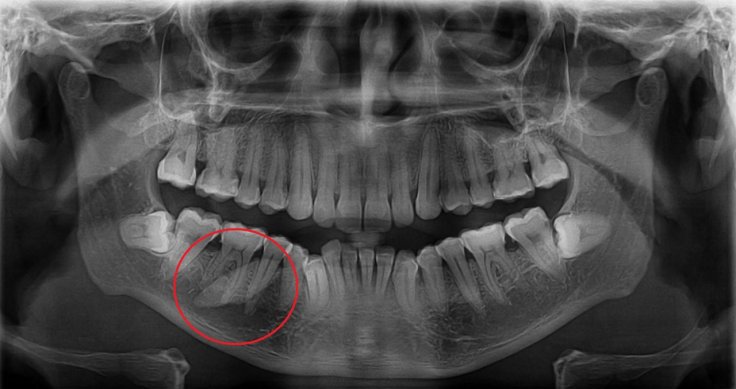Imagine going to the dentist with acute pain in the jaw and being told that a 'hidden' tooth within the jaw was the cause? And imagine being referred to a surgeon for its removal only to find out that it was not a concealed teeth but a 'stone'? This is precisely the scenario in which a 37-year-old man found himself!
In a case report published in the BMJ, dental surgeons from India described a case of a giant sialolith (calcified stone-like structure) or a salivary stone misdiagnosed as an impacted tooth and was surgically removed to relieve the man from pain.
What are impacted teeth and sialoliths?
An impacted tooth is not an uncommon condition. It is a tooth that has been unable to break through the gums and grow out. Lack of space in the bone or crowding of teeth or genetic factors are the usual causes. Surgical removal of the tooth is recommended only when it causes discomfort or other complications. Third mandibular molars or wisdom teeth are often found impacted.

A sialolith is the formation of a calcified mass inside a salivary gland. Usually, sialoliths are found within the duct of the submandibular glands or "Wharton's duct" that are located in the lower jaw. The resemble stones in appearance. While rare, sialoliths which measure 15 mm or more are known as giant sialoliths

'Hidden' tooth
The man complained of severe pain that was sporadic. It was found to be aggravated when the man ate and chewed. Emanating on the right side of the lower jaw, the pain radiated to the area surrounding the right submandibular gland. A dentist deduced that an impacted tooth was the cause of pain and referred the patient for the surgical removal of the tooth.
Not a tooth but a calcified 'stone'
Dental surgeons examining the affected area found swelling in the area where the man complained of pain. However, further examination could not be carried out it worsened the patient's discomfort. Therefore, the doctors performed ultrasonography (USG) to take a closer look at the swelling of the soft tissue in the affected region.

Much to the man's surprise, the surgeons found that the 20mm 'teeth' embedded within his jaw was not teeth! It was, in fact, a large sialolith. Under the administration of general anaesthesia, the giant sialolith was surgically removed. The man made a quick recovery. "On postoperative follow-up, the patient had uneventful healing and the symptoms of pain and swelling resolved," the surgeons wrote in the report.
Recommendations to reduce misdiagnosis
Noting that such misdiagnosis is rare, the authors recommended that diagnostic aids such as USG that were used in this case can help avoid misinterpreted diagnosis. "Use of correct diagnostic aid, like USG, helps in arriving at correct diagnosis, thus avoiding wrong treatment," they wrote.

They also made recommendations for dental practitioners to enable them in spotting such cases more accurately. "Following features should be used to differentiate sialolith from an impacted tooth on orthopantomogram; lack of sclerotic margins of lamina dura, absence of radiolucent central pulp chamber and differential radiolucency between enamel and dentin," recommended the surgeons.









